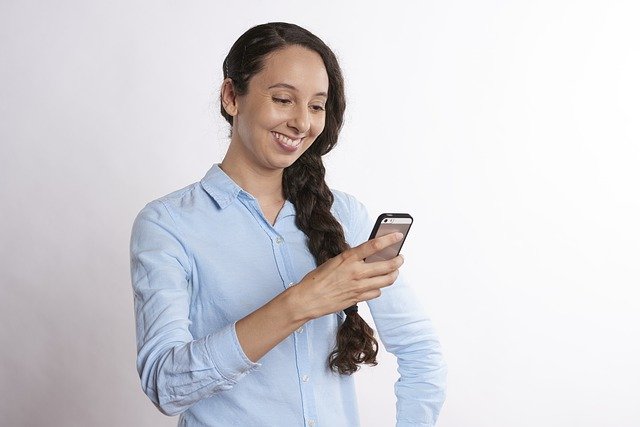This is a success story of the implementation of mobile patient registration. A leading children’s hospital located in New Jersey has been a customer of PatientWorks’ self-service patient registration solutions for many years. Due to corporate policies, PatientWorks is unable to use the hospital’s name in this success story. In this article, the hospital will be referred to as “the Client.” In 2014, the Client teamed with PatientWorks Corporation and deployed patient self-service check-in tablets at their 14 locations. These tablets used child identification cards with magnetic stripes to quickly identify the patient and allow the patient to go through a self-check-in process where, based on the location and service to be provided, the patient verifies demographic data, insurance, signs the appropriate forms and makes any copayments due for the service.
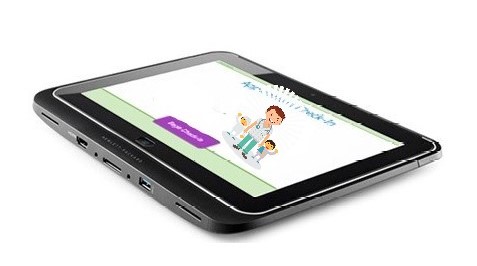
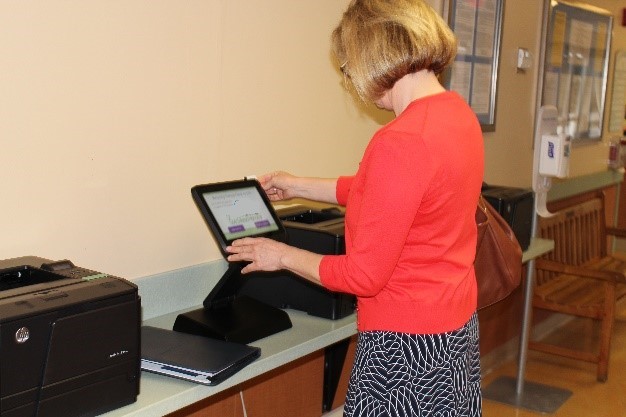
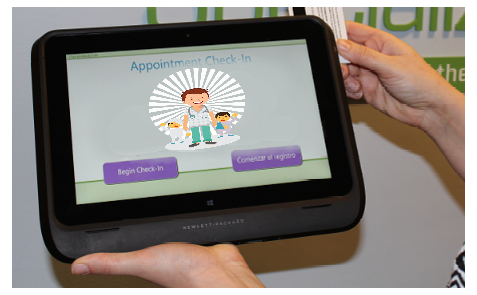
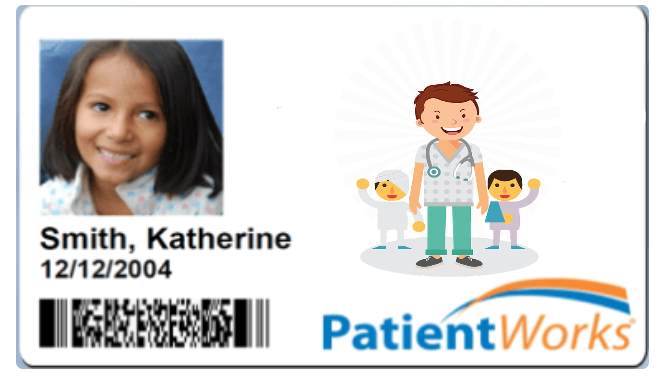
When the 2021 pandemic struck, the Client faced the challenge of providing care through telehealth sessions with their patients. Since the patients were not physically coming into the facilities, they were unable to use the check-in tablets. Once again, the Client called on PatientWorks and deployed a new mobile patient check-in solution which allowed the patients to check-in from anywhere on their smart phones, tablets or PCs at home. This additional convenience covered the problem of self-check-in for telehealth patients.
In addition, the Client implemented PatientWorks’ appointment reminder solution which texts the patient to remind them of their upcoming appointments and provides a link to quickly pre-check-in for their appointments.
Examples of the appointment reminder and some of the mobile check-in screens.
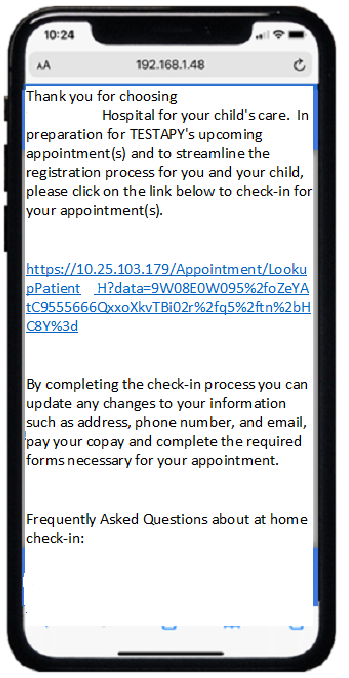
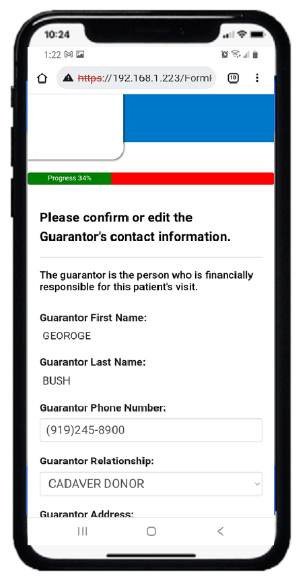
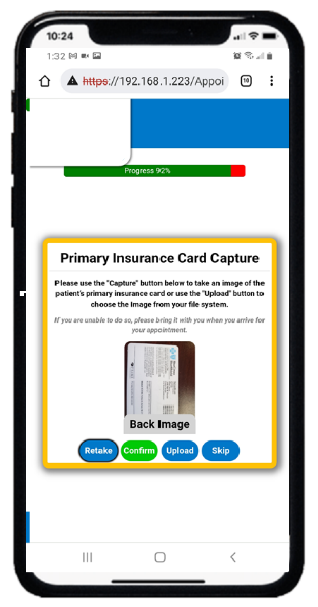
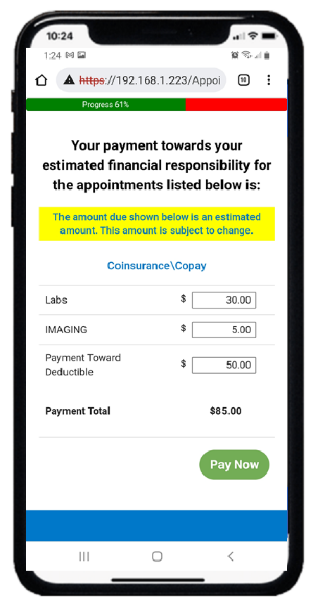
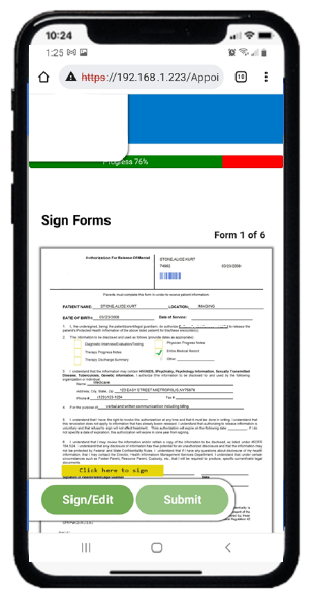
This case study provides details on the Client’s project and its implementation.
The Project
PatientWorks had built all the complex business rules of the Client’s registration process into the patient self-service tablet solution that had been successfully used for many years by patients. The objective was to provide the same functionality of the tablets to the patients in a mobile solution that allowed them to check-in from anywhere.
The Client went live with the mobile solution in September, 2021. The statistics of the project were as follows:
Annualized Patient Appointments 215,000
Annualized Appointment Reminder Volume 189,000
Annualized Patient Self Check-ins Kiosks and Mobile 112,164
Approximate Annualized Self Service Patient Payments $ 450,000
The combination of the on-site tablet self-service solution with the new mobile self-check-in solution allowed the Client to provide all the conveniences needed to support their patients including telehealth sessions. Staff had visibility as to what the patient had done on their mobile check-in prior to the appointment. They could view images of driver’s licenses, insurance cards, signed forms, amounts paid, etc. to see that the patient had successfully completed their check-in process. The mobile solution received positive comments from staff about how easy the check-in process was.
Objectives
The Client needed a solution to the registration for the patient telehealth sessions. The registration staff was calling patients, verbally attempting to perform registration tasks and was having difficulty getting payment and completing the required registration process. It was a manual and frustrating process both for staff and the patients. There was a lost opportunity of collecting copayments before the telehealth service was performed.
In addition to telehealth appointment registration challenges, the registration management faced the fears of patients and staff in coming in contact with an infected individual. Many patients deferred care due to fears of infection. The mobile solution reduced contact between the patient and the registration staff easing some of these concerns.
The objectives of the project were simple – provide the same functionality that patients see when they use the self-check-in tablets at the facility but instead through a mobile application that patients could use from anywhere on any computer or phone.
Challenges
The project had many challenges that PatientWorks and the Client had to overcome to achieve a successful outcome. A few of these challenges were:
- Security. With ransomware and other attacks on healthcare providers increasing and concerning, the security of the mobile solution was a critical element. The Client’s security team completed a security review of the proposed solution. The solution was deployed on premise at the Client under the control of the Client’s IT department and incorporating the security infrastructure and controls required for this type of external patient facing solution. Setting up the infrastructure and controls took time and was a critical path item for the project. However, it was one of the most important elements of the solution.
- Patient Authentication. When the patient uses the tablet check-in at the facility, they swipe their ID card to identify themselves. On the mobile application, to confirm their identity they were asked to enter their first name, last name and date of birth. Some issues arose with the matching of the name data entered in the mobile application with the name data as entered in the Client’s EMR: MEDITECH. If there was not an exact match, the patient was not allowed to proceed. This initially was a patient education and training issue on how to use the mobile application. Other options were implemented to simplify the process and still authenticate the patient allowing the patient to enter their first name and telephone number. The common issues in this area are accent marks, hyphenated names, and nick names.
- Patients Not Completing the Entire Mobile Procedure. In early use, some patients would not complete the entire mobile check-in process. Instead, they would abandon the process part way through. A progress bar was added to the application to show the patient where they were in the stages of the check-in and what was left to be done. Wording on some of the mobile check-in screens was modified for clarity and better instruction. The pre-registration staff facing queue was modified to show the last screen the patient completed to assist staff in working with patients who thought they had completed the entire process. A text is sent to the patient when they successfully complete the mobile check-in process.
- Adoption of the Mobile Solution. As with any new procedure or service offered to patients, getting patients to use the technology is always a challenge. Due to the fact that patients and their parents were used to working with the self-check-in tablets and the workflow on the mobile check-in solution followed the basic workflow of the tablets, it was easy for the patients to transition to the mobile solution. They were familiar with the normal check in process at the Client and the mobile solution was familiar and comfortable for them to use.
- Mobile Payment Technology. The Client had been processing patient payments with a “card present” technology by having the patient swipe their credit cards on the tablet to process a payment. The mobile solution uses a “card not present” technology. The setup and implementation of the card not present technology was easy and assured that neither the Client nor PatientWorks would be exposed to patient sensitive credit card data. The setup and testing of the mobile card not present solution was part of the project implementation. Patients are used to making payments online and were able to quickly adapt to this method of payment. The Client’s business rules on payments were incorporated in the business logic of the mobile application.
Summary
In the middle of a continuing pandemic, the Client and PatientWorks Corporation were able to expand the Client’s patient self-service registration solutions to include patient mobile registration from anywhere. The solution was successfully implemented and is being used by patients for normal and telehealth appointments. Appointment reminders are sent daily reducing “no shows” and prompting the patient to check-in via the mobile application. The solution was modified to allow patients to check-in once for multiple appointments that span several days (to handle frequent recurring appointments such as physical therapy and make it easier for the patients). The Client’s patients today use the mobile application to check-in for appointments, verify demographics, complete and sign forms, and make payments. Staff has a simplified registration process and can easily see what patients have done during their mobile registration. Patients and staff are happy. The hospital is now able to complete the necessary registration steps for telehealth appointments and collect the funds that they were not able to before implementing the mobile solution.
Give us a call if you have any questions.
PatientWorks Corporation (919) 238-7064

